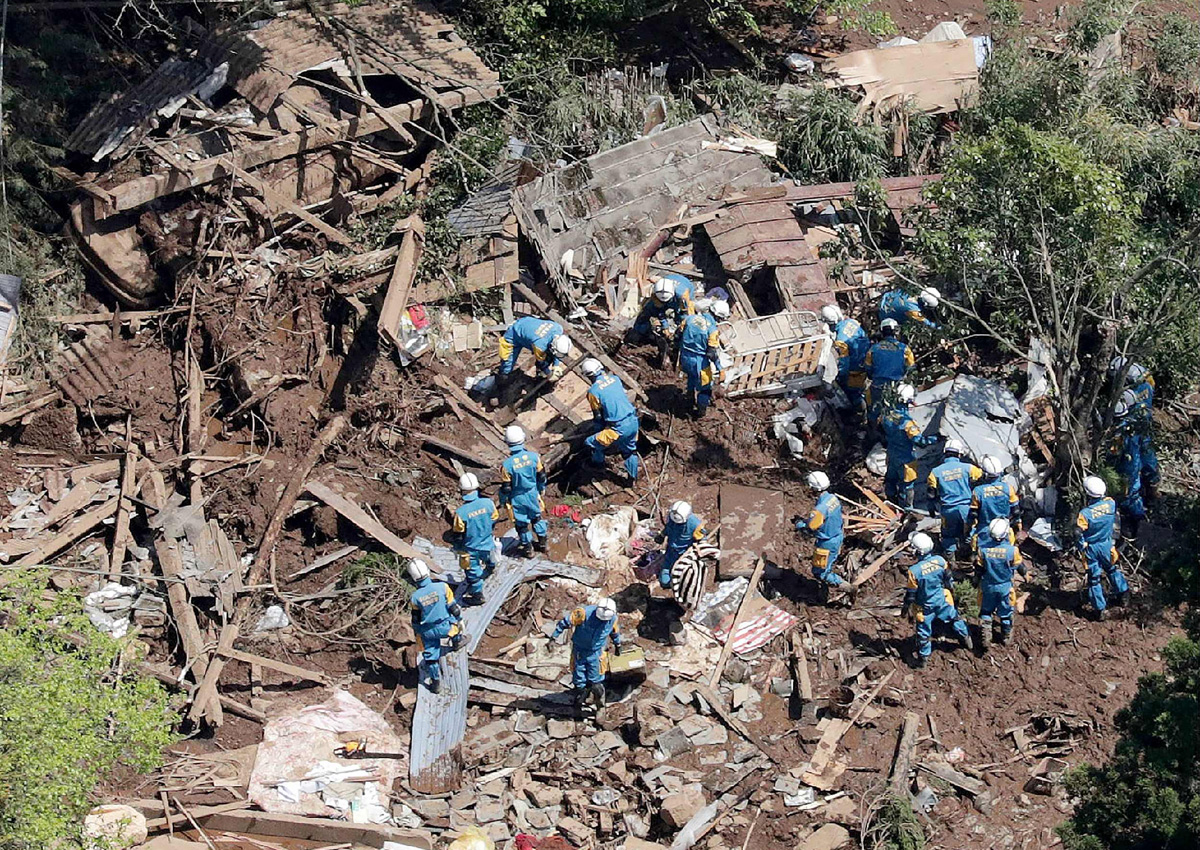Rescuers were racing against the weather and the threat of more landslides Sunday to reach people still trapped by two big earthquakes that hit southern Japan.
At last 41 people are known to have died in the double disaster, with at least six still missing – feared buried in shattered houses or under torrents of mud.
Heavy rain was lashing the area around Kumamoto, where officials have warned quake-loosened hillsides could be at risk of collapse as aftershocks continued to roil the ground.
The weather was also bringing further misery to those who survived Thursday’s initial quake and the bigger, more powerful tremor that hit early Saturday.
In the badly-affected town of Mashiki, few of the traditional style wooden houses remained intact, and their occupants described the hardships of surviving in the destruction.
“I sleep in a car and stay in this tent during the day,” Seiya Takamori, 52, told AFP, gesturing to a shelter made from a blue plastic tarp.
“In this area, we all knew there was an active fault running underneath the town of Mashiki, but no one really cared about it.
“We always said to each other that a big quake would hit at some point, but not really taking it seriously.” Neighbour Masanori Masuda, 59, was also fending off the weather in a makeshift tent.
He said many houses were in reasonable shape after the first tremor, but had suffered badly when the second quake struck, leaving occupants without basic necessities.
“I need batteries to charge my mobile phone. Also, I need a toilet. I am afraid of going into the battered house, but I cannot help it. I take a bucket of water with me and have to use the toilet in the house,” he said.
The two quakes triggered enormous landslides that swept away homes, roads and railway lines, and reduced even modern buildings to rubble.
More than 90,000 people have been evacuated, including 300 from an area near a dam thought to be at risk of collapse.
Isolated villages in mountainous areas near the city of Kumamoto were completely cut off by landslides and damage to roads. At least 500 people were believed trapped in one settlement.
Aerial footage showed a bridge on a main trunk road had crashed onto the carriageway below it, its pillars felled.
The government said Saturday that there were “multiple locations where people have been buried alive” as it sent in 25,000 troops, firefighters, medics and other rescue personnel.
Around 400 aftershocks have rocked Kumamoto and other parts of central Kyushu, an area unaccustomed to the powerful quakes that regularly rattle other parts of Japan.
Thursday’s initial quake affected older buildings and killed nine people, but Saturday’s brought newer structures crashing down, including a municipal office in the city of Uto.
The combined death toll remained at 41 and six people are unaccounted for, local officials said Sunday.
Nearly 1,000 people have been hurt, 184 of them seriously.
Around 80,000 households were still without electricity, Kyushu Electric Power said, while about 320,000 homes were reportedly without water.
Japan, one of the world’s most seismically active countries, suffered a massive undersea quake on March 11, 2011 that sent a tsunami barrelling into its northeast coast.
Some 18,500 people were left dead or missing, and several nuclear reactors went into meltdown at the Fukushima plant in the worst atomic accident in a generation.
Japan’s only working nuclear plant, southwest of Saturday’s epicentre, was unaffected by the quakes, the government has said.















































